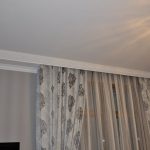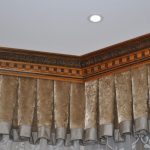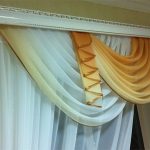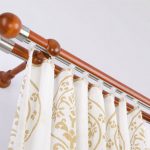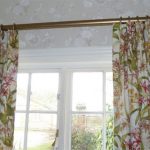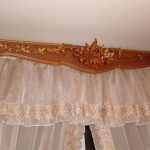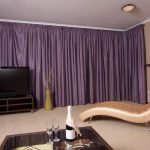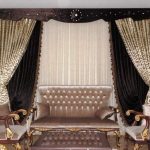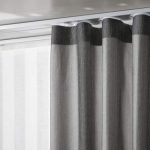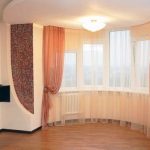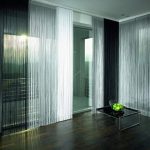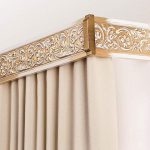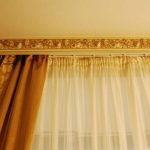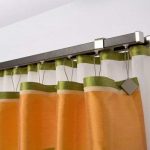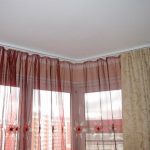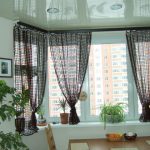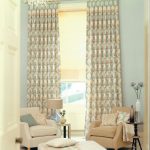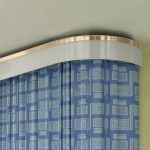Sizes and types of ceiling curtains: mounting methods
Curtains play a significant role in creating the interior of any room. The method of their attachment can complement, fix the desired effect.
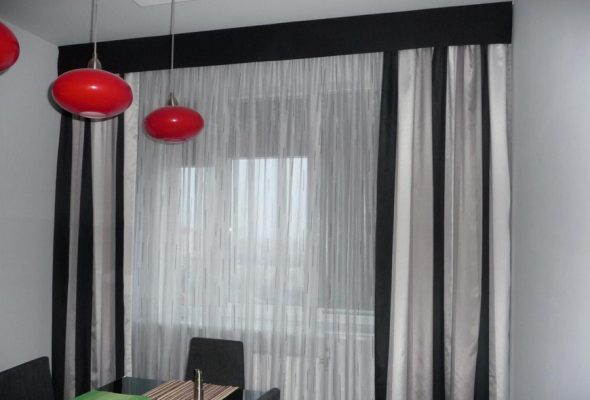
Ceiling curtains allow you to decorate the window opening and the entire surface of the wall from floor to ceiling with curtains, leaving no gaps or splitting the space
Content
- 1 What is a ceiling curtain?
- 2 Ceiling curtains: mounting methods, design solutions.
- 3 The methods of fastening curtains to the flow depend on the material of which it is composed.
- 4 Wall models: varieties, installation
- 5 The size of the ceiling, wall curtains: what you need to consider?
- 6 What is hanging curtains?
- 7 Video: How to choose a ceiling cornice
- 8 Photo gallery of ceiling, wall and hanging cornices in the interior:
What is a ceiling curtain?
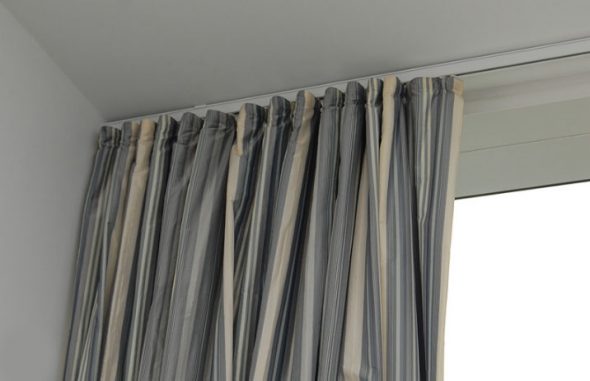
Ceiling curtains for curtains are also called baguettes or consoles.
The original etymology of the word implies transparent curtains (tulle, chiffon, veil). On the modern market, curtains are synonymous with the word cornice, a method of fastening curtains. They are classified according to many criteria: what they are attached to, types of installation and others.
The following characteristics may be common characteristics for all species.
Manufacturing material
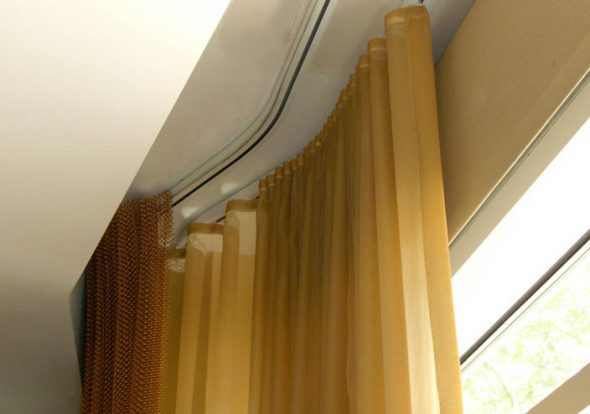
The material of the eaves must not only withstand the weight of the curtains, but also be in harmony with the overall style of the room.
- Plastic. Wide range of colors. Decorative films can be used, glued to the visible parts of the cornice. Allows you to choose the color as close as possible to the canvas. Resistant to deformation, corrosion, wear. Able to take curved shapes. Easy assembly. Liberal pricing. Convenient for use in the kitchen, as it is easy to clean.
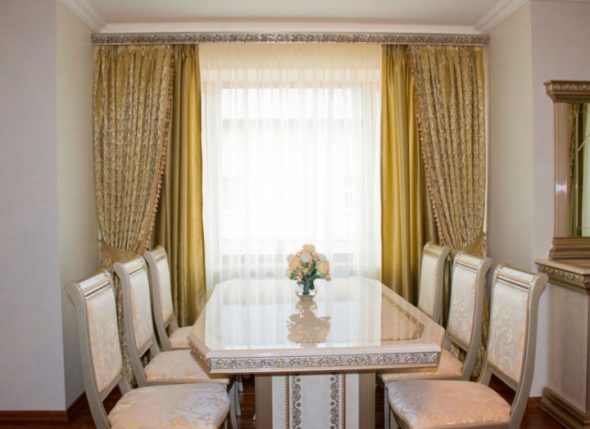
The plastic ceiling cornice is distinguished by an affordable price and high performance.
- Tree. Natural, natural look. Perfectly in harmony with the flooring, wooden furniture. Subject to mechanical damage. Covering substances (lacquer) wear out quickly and with frequent use.
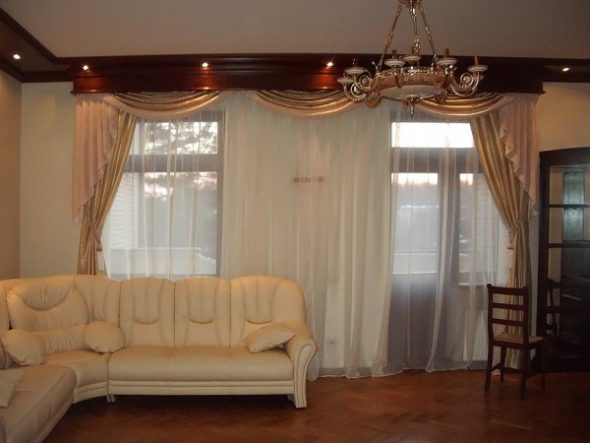
Wooden curtain rod with a ceiling baguette looks very nice in the living room
- Metallic. Aluminum is most commonly used. Forged look incredibly stylish, aristocratic. Can be covered with self-adhesive films. Paints imitating gold, bronze and silver are applied. Lightweight, able to withstand drapes of large masses. Long service life.
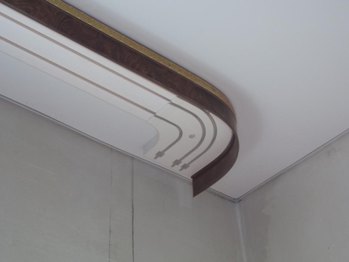
Metal curtains are demanding to the style of the room, ideal for heavy materials and multi-row curtains
- Polyurethane. Very flexible. Accepts various configurations. You can repeatedly repaint. Various reliefs are applied.
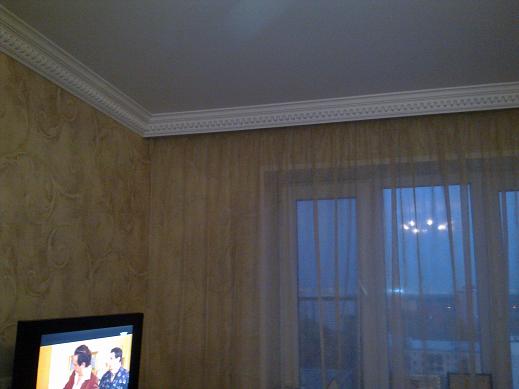
Ceiling polyurethane eaves allow you to visually increase the area of the room and are suitable for painting colors to match the interior
The number of guides holding curtains
- Single row One canvas. Often only transparent sheer light weight.
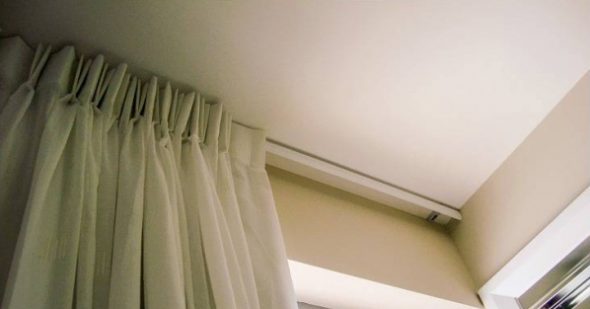
Single-row ceiling cornice for curtains - the cheapest and easiest option
- Double row Two canvases one after another. Night drapes, day curtains.
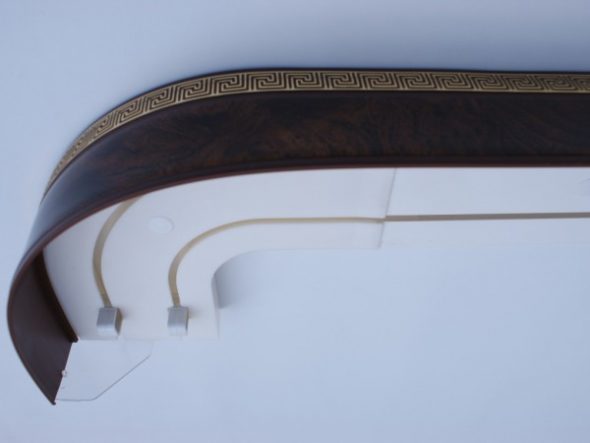
Two-row plastic eaves with a decorative level
- Three-row.In the presence of complex designs, the third guide allows you to hold additional weight. For example, various draperies, folds, pelmets.
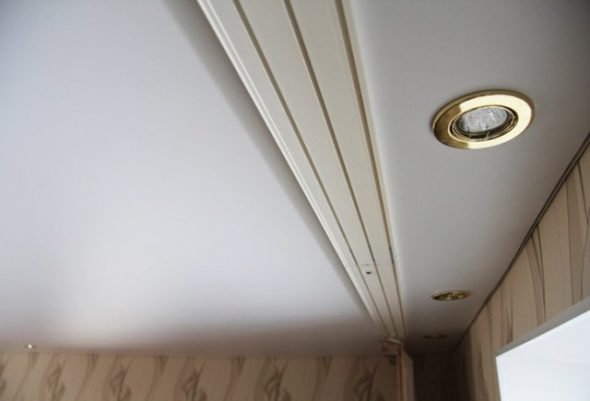
Three-row plastic ceiling cornice allows you to hang tulle and thick curtains at the same time, and to decorate the cornice with lambrequin
Ceiling curtains: mounting methods, design solutions.
The main differences from other consoles
- The ability to hang a curtain from the ceiling to the floor. Closes the entire area, without gaps. The ideal solution for low ceiling rooms. The usual methods of fastening curtains visually "cut" the height even more. Ceiling cornices allow you to achieve a visual deception, lift the ceiling.

To visually increase the width of the window, it makes sense to choose a ceiling cornice 30-50 cm longer than the window itself.
- Solves the problem of non-standard rooms. Irregular polygons, semi-oval, rounding - the shape of the room, its individual parts are difficult to decorate with an ordinary wall baguette. Ceiling can take any form, bends. Keep an aesthetic look.
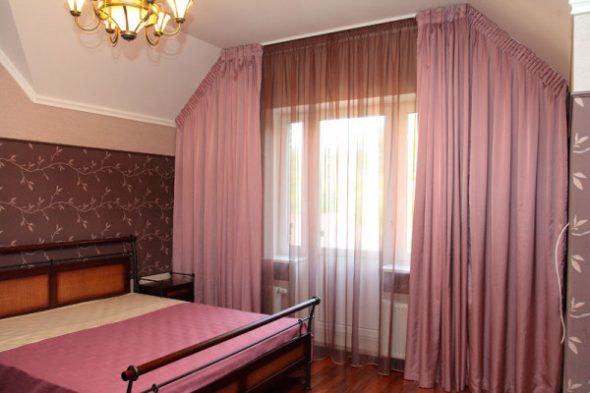
Eaves on the ceiling for curtains in the design of the bedroom with a window of irregular shape
- Can be fastened not only at two, three points as the wall. The mounting step is chosen independently, depending on the weight, the number of curtains.
By external criteria
- Round. Most often made of plastic. The package includes: straight elements of various lengths, turns, bends. Will bypass any geometric shape of the walls. Fully attached to the ceiling, without projections, decorative elements. This design can be hidden in a drywall box. There is a feeling that the curtain is floating in the air, is not attached to anything. LEDs hidden in such a niche can effectively highlight the overall canvas.
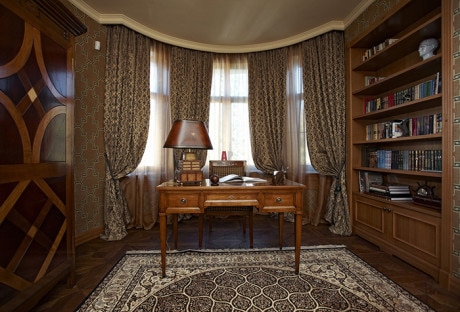
Semicircular bay ceiling cornice serves for the decoration of windows of irregular shape
- Baguette. On the front side, in addition to the design itself for fastening the curtain, a decorative element is put on, resembling a curved bar. Fully frames, hides the upper part of the curtain.
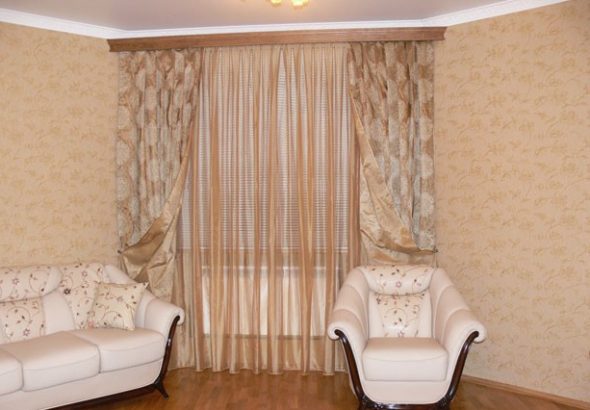
Ceiling cornice in the living room with a framed wooden plank
- Strings. A budget option. Between the two brackets stretched string, which is attached to the hooks. Can be hidden in the box. Used in the design of rooms in the style of minimalism, high-tech.
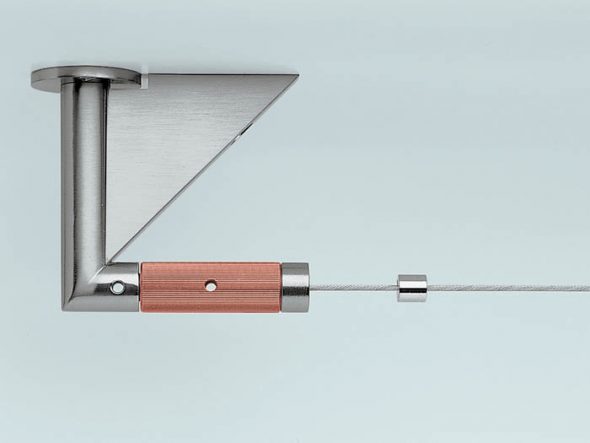
Ceiling string cornice is only suitable for thin fabrics and single-row curtains
- Profile Large bending radius. Protruding from the ceiling a few centimeters. Durable, reliable. Maintain a lot of weight. Made of plastic. If desired, the customer is equipped with an electric drive.
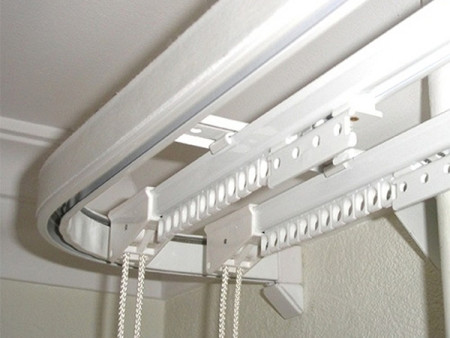
Profile eaves are the whole system including tracks for runners, the mechanism of management, caps and clamps
The methods of fastening curtains to the flow depend on the material of which it is composed.
- Plasterboard ceilings. Pay attention: at the stage of repair you need to lay a separate profile, wooden supports, beams to choose from, in order to subsequently attach a cornice to it. Fixation directly onto a drywall sheet is not possible. This will damage the design of the ceiling itself, make it fragile, dangerous.
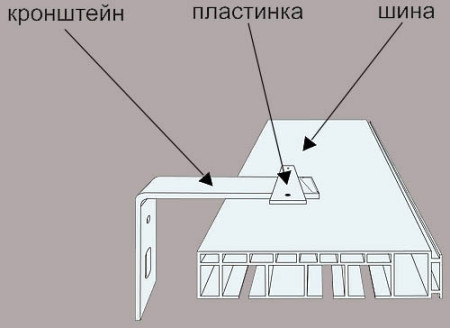
Installing the ceiling eaves on the plasterboard ceiling
The necessary tool: self-tapping screws on drywall, screwdriver (drill), level, marker, tape measure.
Instruction
- We plan places for drilling on all line of a curtain. Take into account the indent from the window. It is better to use a level to keep a straight line.
- If there are bends, we assemble the eaves into a single structure.
- Depending on the configuration, we fasten the brackets, or the eaves directly to the ceiling.
- Plugs are put on the edges of the construction.
Additional bookmarks are required for attachment to stretch ceilings. It is necessary to take into account their fragility, subtlety. It is possible to lay wooden supports before its installation.Or bring the ceiling close to the drywall niche, in which the cornice will be hidden.
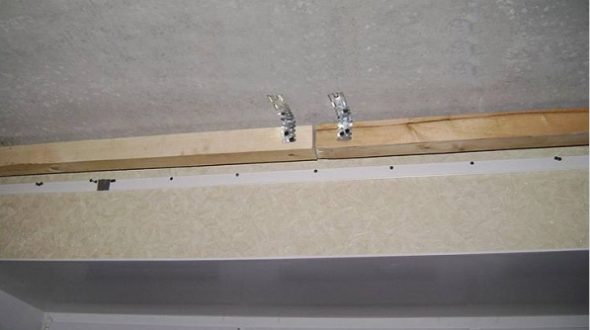
Installation of the mortgage bar - installation of the ceiling eaves to the gypsum and stretch ceiling
- Reinforced concrete floors. Do not require additional design at the repair stage. The most popular way.
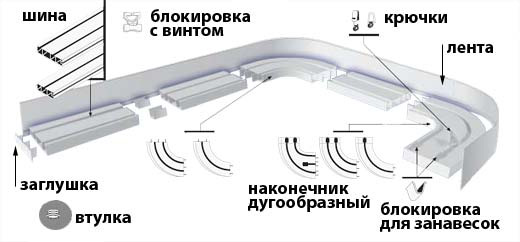
Technology installation of the ceiling eaves on the concrete ceiling
Required Tools
- Dowel. Butterfly - is revealed when screwing screw. Umbrella - protrusions open up when they fall into the void between the drywall and the wall. Screw - dowel and screw are simultaneously screwed. I happen to plastic, iron. When choosing you need to take into account the weight of the curtains. Iron more reliable.
- Perforator.
- Screwdriver.
- Level.
- Rubber hammer.
Consider what steps need to be performed.
- Putting the eaves in one-piece design.
- Scheduled places for drilling.
- Punch punch holes.
- We attach curtain or brackets to the ceiling.
- Fasten with dowels.
- Put on stubs.
The final stage for all processes is the decoration of the entire structure, if any.
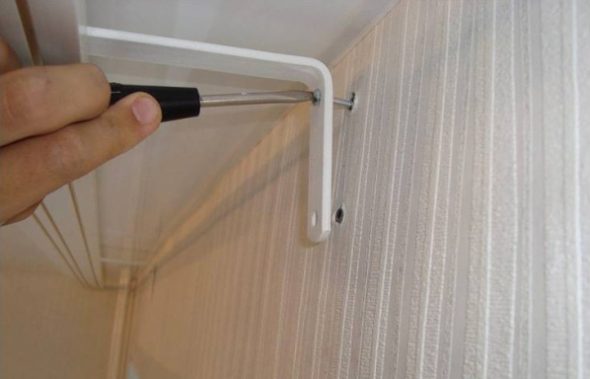
If the installation of a cornice on the ceiling is not possible, then it is attached to the wall with brackets
Some manufacturers declare such methods of fastening: glue, adhesive tape. Masters consider them irrelevant, hazardous to health. Over time, they can not withstand the weight of the curtains, injure family members in the fall. Consider these options in more detail does not make sense.
Ceiling curtains are equipped with a tape. Can be with a smooth edge. They cling with the help of hooks, "pegs", velcro. When ordering, consider the specified method of fixation on the eaves.
Curtains to the ceiling is an excellent choice for bedrooms and halls. Due to the durability they can withstand any weight of decorative elements. Properly selected material will complement the overall impression of the room.
Wall models: varieties, installation
Wall mounting options for curtains, better known as baguette. Will be suitable for rooms with an average, big distance from a floor to a ceiling. Performed from all the above materials.
By external criteria distinguish the following.
- String, profile, baguette. Similar to ceiling curtains. Do not hide in niches. Attached to the wall.
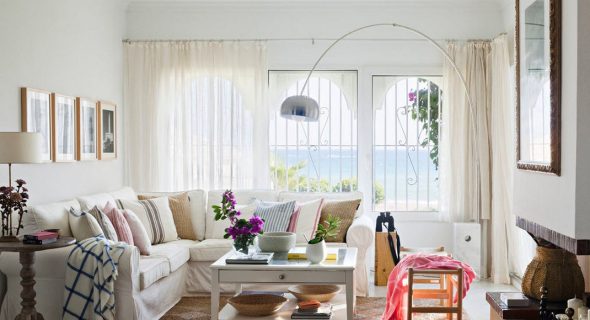
Simple and almost invisible stringed cornice mounted on the wall
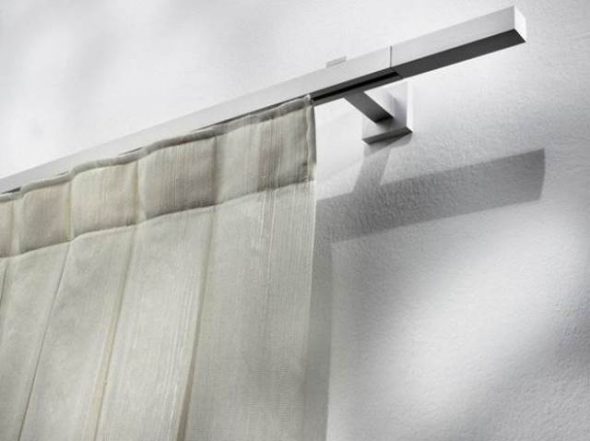
Aluminum profile cornice for wall mounting curtains
- Shtangovye. Pipes attached to brackets of various shapes. Distinguished by diameter.
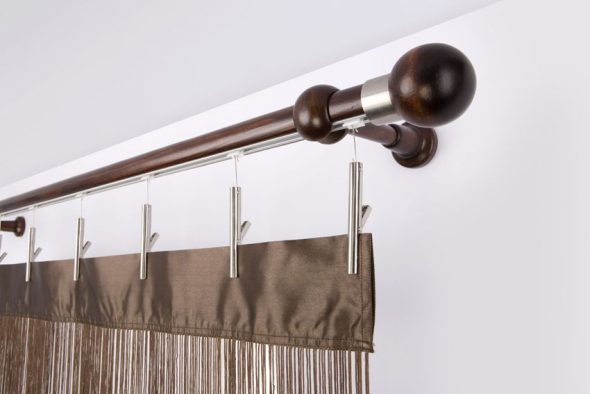
Wooden rod curtain rod with original clips for curtains
- Combined. Combine several types at once.
- For Japanese curtains. From two to five strips, along which the “smooth” straight fabric “slides” along the entire length of the canvas.
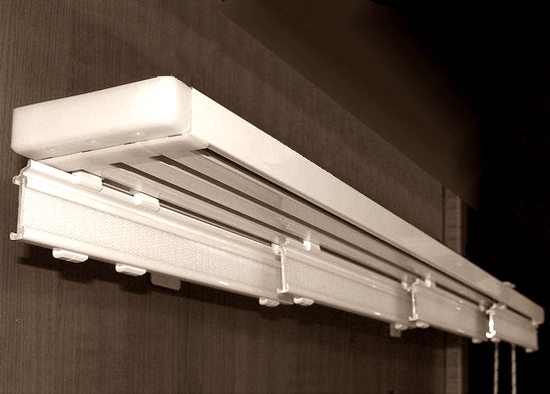
Double-row cornice is equipped with tracks-guides, on which canvases of Japanese curtains go.
- Curtain rods for roller blinds. Can be attached to the ceiling, wall, window opening.
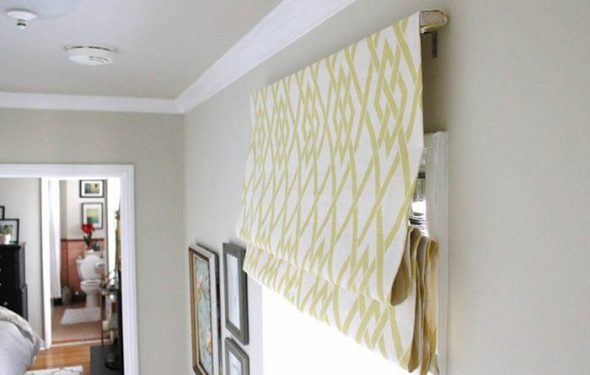
Eaves for installation of the Roman curtains over a window
Fastening methods are fully consistent with the ceiling eaves. The difference is that they are mounted to the wall. A large number of decorative tips: spears, leaves, balls, spades.
This design allows you to apply different types of fixation of the canvas: loops, ties, eyelets.
What curtains are better: ceiling or wall? There is no single answer. As already mentioned, it all depends on the height of the ceiling, the weight of the curtains, the desired final effect.
The size of the ceiling, wall curtains: what you need to consider?
There are all sorts of variations both in length (up to several meters) and in width. For all types there are basic selection criteria.
- Expected result: just close the window area. Approximately 15-25 cm are added to the width of the window.
- Result: visually narrow the window. Cornice exactly on the opening.
- Result: increase the window. At least 25 centimeters longer.
The width depends on the number of rows.On average, it ranges from two to ten centimeters. This factor must be considered when forming niches for ceiling options.
The minimum distance from the wall (in the case of wall mounting) is 20-25 centimeters.
What is hanging curtains?
Rather, the novelty of design moves in the types of editing. From the wall is no different. Mounting brackets, fixtures does not occur on the wall, and the ceiling. There is an illusion of "floating" curtains.
Fastening methods, stages are completely similar to those described earlier.
Video: How to choose a ceiling cornice

